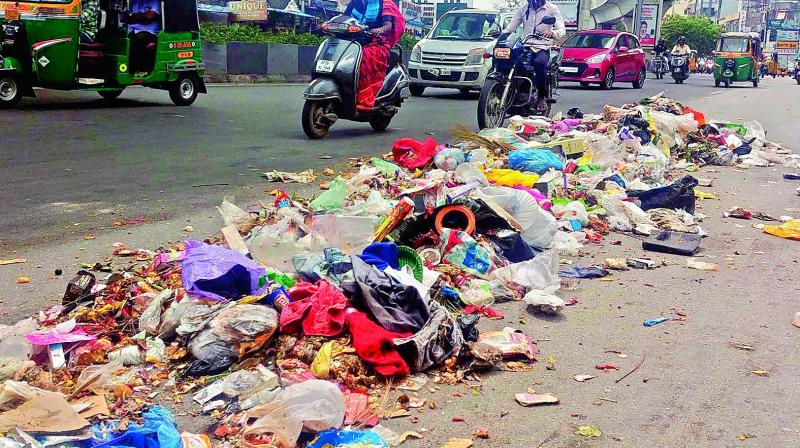Hyderabad: Only 25 per cent of 5,000 tonnes of waste segregated
One GHMC official said, “The most difficult task in our dumping sites is segregation of waste.

Hyderabad: Segregation of waste is the key to urban waste management. It not only reduces landfill size in the cities but also paves the way for sustainable development.
The Greater Hyderabad Municipal Corporation’s (GHMC) data shows that out of 5,500 tonnes of daily waste, only 25 per cent is being segregated in Hyderabad.
According to a survey done by a private firm in collaboration with the GHMC and British High Commission, the most efficient way to manage the city’s solid waste is the circular economy model. Circular economy goes beyond recycling and works on the principle of a restorative industrial system geared towards treating waste as a resource. It strives for a continuous cycle where the value of an available resource is preserved and it is reused in an optimised way.
Officials from GHMC emphasised that if households stop mixing wet and dry waste, the work of waste management will become easier. In 2018, the GHMC, under the ‘Swachh Telangana’ initiative distributed around 45 lakh dustbins to households for segregation of waste.
One GHMC official said, “The most difficult task in our dumping sites is segregation of waste. The Japanese segregate their household waste in six categories. Here we want people to do it in just two categories.”
Mr Srinivas Reddy, GHMC executive engineer, said, “Waste management is a social engineering problem and the key is minimisation at source and citizen engagement. If we start making compost pits in our houses, we will be not only ease the burden from the shoulders of the corporation but also enrich our soil for raising plants.”
He said if people were unable to reduce and manage daily waste, the burden will fall on their pockets. Wet garbage is heavier and requires more vehicles to transport to the processing plants on the city outskirts. The monthly per person cost for city dwellers comes to around Rs 500 but the GHMC charges only Rs 50, Mr Reddy said.
The economy is based on linear methods of consumption and production which are unsustainable for the planet. The linear model involves “produce, use, dispose” and is a wasteful way of utilising resources. A circular economy tries to address the dual issue of increasing waste and cutting down the use of resources, said an official from the survey group.
According to the World Economic Forum, between 1900 and 2015, the urbanised population increased from 14 to 54 per cent and is forecast to rise to 66 per cent by 2050. This growth of urban population is not only going to increase consumption, but will also lead to unprecedented amounts of waste.
Municipal administration director Dr T.K. Sreedevi, said, “Sanitation is the topmost priority and the state has undertaken pioneering strides in this direction that are aligned with the Swachh Bharat Mission and Swachh Survekshan.”
The problem of garbage is not only limited to Hyderabad. In a recent report, India’s tallest garbage mountain located in the Ghazipur landfill site is expected to surpass the height of the Taj Mahal by 2020. Presently it stands 65 metres, spreads over an area equal to 40 football fields and rises nearly 10 metres every year.

